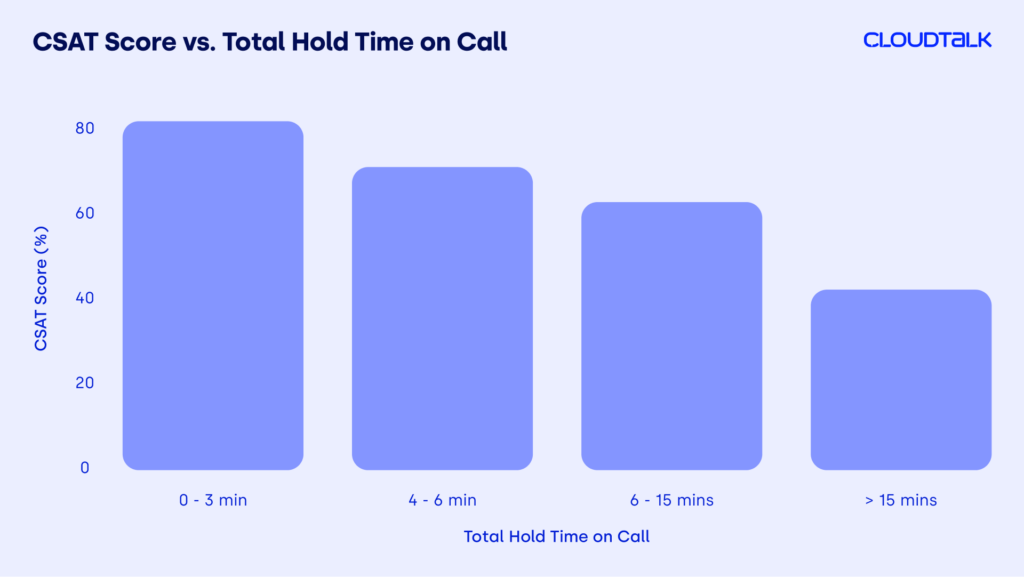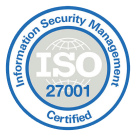
Long wait times are among the top three reasons* for why customers stop doing business with a company. Some surveys suggest that high call volumes can contribute up to 75%** of lost deals.
According to Accenture***, poor customer service constitutes an annual cost of $1.6 trillion for US businesses alone. But answering high call volumes costs you more than just money, as it also has the knock-on effect of worsening employee burnout.
Therefore, getting used to managing high call volume should be a priority for every business, especially when they’re already noticing signs of their call center call volume suffering from too many calls. In this article, we’ll show you 9 ways to do that.
Key takeaways:
- High call volume occurs when the number of incoming calls consistently exceeds typical levels, often due to factors like seasonal spikes, technical issues, or marketing campaigns.
- Not managing high call volume leads to longer wait times, reduced customer satisfaction, and employee burnout, affecting both business performance and staff morale.
- Combat high call volume by optimizing staff scheduling, implementing self-service options, and utilizing tools like call-back systems and intelligent call routing to manage the load efficiently.
Try CloudTalk for 14 Days Completely Free!
What Does It Mean to Experience High Call Volumes?
High call volume is bad for business. On average, it is recommended you maintain an 85% call center occupancy rate (i.e., how many agents are on a call at any given time) to ensure you have some free lines and your employees have time to rest.
If you go beyond that, there are a number of things that happen. First, your response rate and average handle time (AHT) increase, meaning people have to wait on hold longer. This in turn lowers customer satisfaction (CSAT) and leads to higher churn.

At the same time, the high call volume also negatively impacts your workforce. If your agents are consistently overworked, their odds of burning out increase, while their productivity falls. In extreme cases, this can lead to mass resignations.
9 Best Practices to Handle High Call Volume
For the reasons outlined above, efficiently managing a high volume of calls can be the difference between building an extensive network of satisfied customers, versus losing them to long wait times and poor customer experiences. That’s why you should:
Key Tips for Cold Calling Success
There’s more you can do to improve your response and conversion rates than just optimize the times of your outreach and follow-up with prospects more often. Below, we’ll discuss some of the things you can do to boost your results even further.
#1: Implement Callback Options
Don’t want to frustrate your customers by keeping them on hold? Make sure they get the service they need on time with a Callback feature! This also allows you to evenly distribute the workload even during peak hours and maintain smooth operations.
Respond to Calls Quickly with Callback
#2: Order Calls Based on Priority
Not all calls are created equal. But by using call center features such as VIP Queues, you can effectively focus your efforts on customers who are essential for your bottom line. You should ensure they get the attention they deserve before anyone else.
#3: Use Intelligent Call Routing
Don’t waste valuable time on unnecessary call transfers. Let customers choose the reason for their call and patch them through to the right agent on the first time, by assigning employees key abilities and leveraging Skill-Based Routing.
#4: Support Self-Service
Not every call necessarily requires an agent’s attention, and not every customer wants to call you. Implement an Interactive Voice Response (IVR) system with a pre-prepared list of routine answers, and let customers choose to solve their issues on their own, even faster.
Save Time with Interactive Voice Response
#5: Optimize Scheduling
Fortune favors the prepared. Investigate historical call center data via Analyticsand identify your peak call volume times. Account for this in your scheduling and create a workforce management systemthat can handle even the most difficult times.
#6: Shorten Average Handle Time
Coach your agents to handle the most common questions and issues with ease. Streamline the process even further with productivity tools, such as CRM integrations and sales scripts, and help your team solve more calls faster by lowering AHT.
#7: Coordinate Efforts Live
When push comes to shove, you’ll need to effectively focus the team’s efforts on what matters most – managing all calls on time. Evaluate how clients are feeling with AI-powered Sentiment Analysis and communicate priorities across the company with a Real-Time Wallboard.
#8: Outsource Communications
Still struggling to keep up with all the calls? Not partial to hiring new hands and mouths to handle all those conversations? Then you may want to consider outsourcing a part of your process to a 3rd party provider, whether in the short or long term.
#9: Invest in Better Technology
Sometimes, it’s neither your workforce nor processes at fault. It may be that you’re just using an old or inefficient solution. Thankfully, nowadays, comprehensive tools like CloudTalk are affordable, easy to onboard, easy to use, and extremely scalable.
Discover the Future of Conversations
Tips on How to Prevent & Prepare for High Call Volumes
While it’s impossible to eliminate high call volumes entirely, there are several steps businesses can take to minimize the risk and prepare for surges. Here are a final few tips to keep your call center operations seamless and your call volume manageable.
- Provide Multi-channel Support: Offer support through live chat, email, and social media. This reduces the reliance on phone calls as customers have multiple options to get in touch.
- Regularly Share Updates with Customers: Proactively communicate with customers about potential issues via email or social media to reduce confusion and the resulting call volume.
- Have an Emergency Plan in Place: Prepare for unexpected surges, such as system outages, by having an emergency plan ready. This should include backup staff and strategies for handling a sudden increase in calls.
- Conduct Regular Capacity Planning: Periodically review your call center’s capacity in terms of staffing, technology, and infrastructure. Identify any gaps in resources and prepare for future growth or surges in call volume.
- Monitor Social Media: Keep an eye on platforms where customers often report issues or express concerns. Identifying potential problems early on through these channels can help you proactively address them before they escalate.
Common Reasons Behind High Call Volumes
High call volume doesn’t just happen out of the blue. Several common factors can lead to a sudden influx of calls that can overwhelm your team, frustrate your customers, and cost your organization money. These most often include:
- Seasonal Spikes: Holidays or specific seasons often lead to higher call volumes, especially in retail, travel, and services. Businesses should anticipate this based on past trends.
- Marketing Campaigns: When a company launches a new product or promotion, it often leads to an increase in inquiries. Coordinating between marketing and customer service is key to managing this spike.
- Technical Issues & Outages: If a service or product suddenly malfunctions, customers will flood your call center with requests for support. These emergencies require a rapid response strategy.
- Changes in Company Policy: Announcements about new pricing, returns, or policy updates can lead to confusion and a higher-than-usual call volume as customers seek clarification.
- Insufficient Self-Service Options: When customers cannot easily find answers through self-service channels like FAQs or chatbots, they turn to phone support, increasing call volume unnecessarily.
Resolve High Volume Calls Quickly & Easily
High call volumes are an inevitable part of running a business, but how you manage them can make or break customer relationships and operational efficiency.
By understanding the causes and using proven strategies such as the ones outlined in this article, you can turn a high call volume into an opportunity to enhance customer satisfaction. The key is to stay proactive and keep talking.
And if you need a place to do that efficiently, then you should give CloudTalk a try. After all, it’s completely free for the first 14 days!
Get 50% Off Your First Month with CloudTalk
Sources:

















